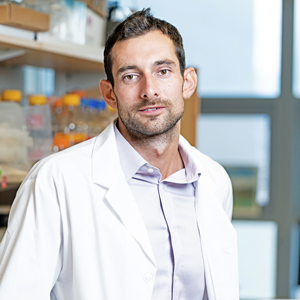
Canadian researchers have developed an effective new technique for identifying aggressive medulloblastoma—the most common type of malignant brain tumour in children—and potentially sparing young patients from unnecessary treatments and their harmful long-term side effects.
The technique, spearheaded by researchers from UBC Faculty of Medicine’s department of pathology and laboratory medicine, BC Cancer and BC Children’s Hospital, can help doctors tailor treatments to individual patients and ensure high-risk cases receive the intensive therapy they need.
“This test will allow hospitals around the world to identify high-risk cases without requiring expensive or complex technology. More children will receive the right treatment based on their tumour type,” said Dr. Alberto Delaidelli, the study’s first author and a UBC postdoctoral fellow in the laboratory of Dr. Poul Sorensen, professor in UBC’s department of pathology and laboratory medicine, distinguished scientist at BC Cancer and investigator with the Michael Cuccione Childhood Cancer Research Program at BC Children’s Hospital.
The method was published online last week in Neuro-Oncology.
Brain tumours are the leading cause of childhood cancer deaths, and medulloblastoma is the most common type of brain tumour among kids. It affects approximately 500 children per year in Canada and the U.S., which makes improving diagnosis and treatment a top priority in pediatric oncology.
It’s a practical solution for hospitals everywhere—no expensive equipment, no long delays, just better, faster care for children with brain tumours.
Dr. Poul Sorensen
While some children with medulloblastoma respond well to treatment, others experience aggressive tumours that are likely to relapse, making it critical to categorize tumours early and accurately. However, current diagnostic techniques rely on complex genetic tests that are expensive and only available in a handful of specialized laboratories worldwide.
Dr. Sorensen and his team tackled this challenge using proteomics, a technique that analyzes the entire spectrum of proteins—the building blocks of cells—to identify biological markers of disease in medulloblastoma. They discovered that a protein called MYC is prominent in the most aggressive medulloblastoma cases. By applying a widely available lab technique called immunohistochemistry (IHC) to nearly 400 tumour samples, they found that MYC-positive tumours were far more likely to relapse and resist treatment.
Currently, children with medulloblastoma receive similar treatments, including surgery, chemotherapy and radiation therapy. However, radiation in particular can cause severe long-term side effects in young children, including learning disabilities and developmental delays. The new MYC test can help doctors decide which children truly need radiation and which can safely avoid it.
“Our test can be performed in a single day by any pathology lab around the world, instead of waiting weeks for complex genetic tests,” said Dr. Sorensen. “It’s a practical solution for hospitals everywhere—no expensive equipment, no long delays, just better, faster care for children with brain tumours.”
A global collaboration with immediate clinical potential
This study, a collaboration between researchers in Vancouver, Toronto, Montreal, Winnipeg, Hamilton, Halifax and Heidelberg, Germany, offers a major step forward in making personalized treatment for medulloblastoma a global reality.
Since IHC is already a routine practice in pathology labs worldwide, this test could be implemented almost immediately, transforming the way this deadly childhood cancer is treated, Dr. Sorensen added.

